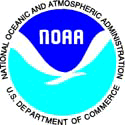



Dr. Leslie M. Hartten
CIRES
University of Colorado,
Campus Box 216
Boulder, CO 80309-0216
e-mail: lhartten@al.noaa.gov
phone: (303) 497-7052
Archive Location For Original Data:
available via anonymous ftp from www.coaps.fsu.edu/rvsmdc_pub/coare/rv/NOAA_AL_isswinds/
Data Format:
Compressed tar files of two directories, each containing daily ascii files for Nov. 1992 through Feb. 1993 taken on one of the two ISS ships (R/V Kexue #1 and Shiyan #3). Each file contains a 25-line header which includes variable descriptions, units, and formats.
Data Volume:
less than 30 MB per site (uncompressed)
about 3 MB per site (tarred and compressed)
Brief Summary:
During the Intensive Observing Period (IOP) of TOGA COARE (Tropical
Ocean-Global Atmosphere Coupled Ocean-Atmosphere Response Experiment;
November 1992 through February 1993), Integrated Sounding Systems
(ISSs) were operated at six location; four were on islands, while two
were on the Chinese ships R/V Kexue #1 and Shiyan #3. Each ISS
consisted of an Omega balloon sounding system, a 915 MHz Doppler wind
profiler, a Radio Acoustic Sounding System (RASS), and a surface
observing station. Post-processing of the Omega sounding and surface
data was handled by NCAR's Atmospheric Technology Division (ATD),
while the profiler and RASS data were post-processed by NOAA's
Aeronomy Lab (AL). In the course of this post-processing, it became
apparent that the magnetometers aboard the two ships had never been
calibrated and that the precision of the Global Positioning System
(GPS) receivers were of a simple, non-differential type that
unreasonably large 1-minute ship speeds
could be recorded. The two processing centers dealt with these facts
in two different but reasonable manners (Miller and
Riddle 1994; Riddle et al. 1996). However,
as a result, comparisons between the shipboard surface winds and the
shipboard profiler winds are not straightforward.
This data set contains a new version of the ISS surface ship winds
which have been processed at the AL using the same methods applied to
the profiler data; spikes in GPS ship speeds were removed and
magnetometer readings were adjusted for an apparent bias before the
ship-relative winds were converted to earth-relative winds. Technical
details are given below and in (Hartten
1995, 1996). These winds have spectral
and statistical characteristics more similar to the surface winds at
the land-based ISS sites than do the unprocessed ATD surface winds,
even after the latter are filtered. Researchers wishing to use
surface and profiler winds together should consider using this set, as
these earth-relative winds were converted from the original
ship-relative measurements in the exact same manner as were the
profiler winds. Other researchers interested in surface winds may
also wish to consider using this data set, especially since part of
the processing involves adjusting unreasonably large ship speeds.
Organization:
The data are in compressed tar files, one file per ISS ship station (RV3 is 'exp' and RV1 is 'sci'). Each compressed and tarred file contains a directory of the same name, inside of which are 4 monthly directories (9211, 9212, 9301, 9302). The data files are in these monthly directories. Each data file has a 25-line header, written by prtheadr_crt.f and read by rdheadr.f (both included in this ftp directory). The 1-minute data are in two daily files for each station, named t0000.jjj and w0000.jjj, where 't' stands for thermodynamic, 'w' stands for wind, and 'jjj' is the julian day. Note that the only differences between these data and the ATD surface data are found in the ship position and speed and in the earth-relative winds.
Technical Discussion:
The components of the Integrated Sounding Systems deployed during the COARE are discussed in detail in Parsons et al. (1994) and the references therein. The 915 MHz Doppler wind profilers were configured to have three beams (1 vertical, 2 oblique). They sampled winds along all three beams in sequence for 25 minutes each half hour, alternating between 'low' and 'high' altitude mode throughout that time; the vertical extents of these data are approximately 3 km and 6 km, respectively. The surface stations measured a variety of meteorological variables, including 1-minute winds from 10 m towers on land and from 16 m towers on the second decks of the ships. On the two research vessels, the profilers were gyrostabilized as described in Carter et al. (1991). Ship position, speed, and course information were provided by a GPS receiver, while the direction of the ship's bow was determined by a magnetometer.
The GPS receiver was "dumb"; receivers of this type will display non-zero speed when stationary, although this can be improved with averaging (Paul Johnston, CIRES/NOAA Aeronomy Lab, 1995, personal communication). The standard horizontal precision of this receiver is a 300 foot radius after dilution of precision and without averaging, i.e. the receiver is within 300 feet of the displayed position (John Wilson, CIRES/NOAA Aeronomy Lab, 1995, personal communication). The unaveraged GPS position was sampled at the end of each profiler data collection period, which typically lasted about 40 seconds, and was recorded into the profiler data files stamped with the time at which profiler data collection started (Paul Johnston, 1995, personal communication). The computer storing the surface observations wrote position information from the same GPS receiver to the surface files.
During postprocessing at the Aeronomy Lab, timeseries plots showed occasional GPS drift; the position information would go to unreasonable values very quickly, and the GPS-reported ship speed and direction would go haywire at the same time (Tony Riddle, CIRES/NOAA Aeronomy Lab, 1995, personal communication). One likely source of this GPS drift is poor satellite geometry. Scientists at the AL attempted to 'fix' the GPS information during those times. A computer program examined the original shipboard quantities (as recorded in the profiler files) and identified potential 'bad' GPS data. Some of the problems were fixed automatically by the program, and the operator was made aware of all the others. All ship speeds greater than 11.0 m/s were flagged, as were those which differed from the mean of the two prior and the two following values by more than 0.85 m/s. The operator could then choose among several alternatives, e.g. ignore the problem, interpolate one or more parameters across the problem area, or make the parameters unavailable. This program was run over all times for which there were profiler data and resulted in what will be termed a cleaned GPS data set.
The 'direction of bow of ship' came from the magnetometer. Timeseries of the difference between the direction of ship velocity vector and the direction of bow of ship for cases when ship speed exceeded 4.0 m/s, together with timeseries of latitude and longitude, were constructed. The differences occasionally become very large (10deg to 30deg) very quickly (in a few minutes). This is not physically reasonable; while we might expect the ship to be headed in a direction slightly off 'dead ahead', at these speeds we do not expect it to be 10deg or more off 'dead ahead' and we do not expect it to be twisting rapidly as it moves forward. In spite of this problem, the magnetometer data ('direction of bow of ship') were more steady than the cleaned GPS data ('direction of ship velocity vector') when the ship was under way. When the ship was not under way the 'direction of ship velocity vector' could indicate the direction of some current carrying the ship and have no relationship to the 'direction of bow of ship'.
The procedure developed at the Aeronomy Lab for the profilers used the magnetometer to determine the direction of the wind, as the profiler measures relative to the bow of the ship. However, a constant 'correction' was added because the aforementioned comparison of the magnetometer direction and ship course (when the ship was under way) suggested that the magnetometer had a bias. The actual bias was probably variable, but the correction was a constant. The correction equalled 12deg for RV3 and 22deg for RV1, and implicitly included the magnetic declination. This correction was applied at all time periods, regardless of ship speed. The profiler velocity vector was then corrected for ship motion if the ship was moving at least 1.0 m/s. At slower speeds ship velocity looked more like a random quantity than a true measure of speed; the integrated velocity did not correspond to the position changes when ships speeds were low. The essence of these corrections is documented in Miller and Riddle (1994) and Riddle et al. (1996). While ATD was aware of these concerns regarding the ship magnetometer and GPS data, they decided not to manipulate these data sets in any way (Miller and Riddle 1994). ATD's earth-relative surface winds, therefore, were constructed by adjusting the ship relative winds based on the magnetometer readings and then subtracting GPS ship motion from the resultant vector wind.
A second set of surface winds has been derived at the AL using the original ship-relative winds and the same methods applied to the shipboard profiler winds. The magnetometer readings from RV3 (RV1) were corrected for an apparent bias of 12deg (22deg) before the 1-minute ship relative wind components were converted into vector wind (u,v). Vector ship motion, computed from the cleaned GPS data, was subtracted from that vector wind if the ship speed was greater than 1.0 m/s. Since the GPS data were only cleaned during those periods in which the profilers were operating, vector ship motion and therefore reprocessed surface winds are also only available at those times.
The cleaned GPS data are available in the files gps.1.fixed and gps.2.fixed for R/V Kexue#1 and R/V Shiyan#3. The columns of integers in these files are, from left to right: year; julian day; hour; minute; second; flag indicating source of data; latitude (hundreths of degrees, north positive); longitude (hundreths of degrees, east positive); speed (cm/s); direction of ship velocity vector (tenths of degrees east of north); direction of bow of ship (tenths of degrees east of north). Note that position has been rounded to the nearest 0.01 degree (~1 km).
References:
Carter, D.A., W.L. Ecklund, K.S. Gage, M. Spowart, H.C. Cole, E.F. Chamberlain, W.F. Dabberdt, and J. Wilson, 1992: First test of a shipboard wind profiler. Bull. Amer. Meteor. Soc., 73, 1587-1592.
Hartten, L.M., 1995: Effects of various processing methods applied to ship-based surface and profiler winds during TOGA COARE. 20th Climate Diagnostics Workshop, Seattle, WA.
Hartten, L.M., 1998: Reconciliation of surface and profiler winds at ISS sites. J. Atmos. Oceanic Technol., 15, 826-834.
Miller, E.R. and A.C. Riddle, 1994: TOGA COARE Integrated Sounding Station Data Report - Volume IA Revised Edition. Available from TCIPO, UCAR, P.O. Box 3000, Boulder CO 80307-3000, 87pp..
Parsons, D., W. Dabberdt, H. Cole, T. Hock, C. Martin, A.-L. Barrett, E. Miller, M. Spowart, M. Howard, W. Ecklund, D. Carter, K. Gage, and J. Wilson, 1994: The Integrated Sounding System: Description and Preliminary Observations from TOGA COARE. Bull. Amer. Meteor. Soc., 75, 553-567.
Riddle, A.C., W.M. Angevine, W.L. Ecklund, E.R. Miller, D.B. Parsons, D.A. Carter, and K.S. Gage, 1996: In situ and remotely sensed horizontal winds and temperature inter-comparisons obtained using Integrated Sounding Systems during TOGA COARE. Contributions of Atmospheric Physics, in press.